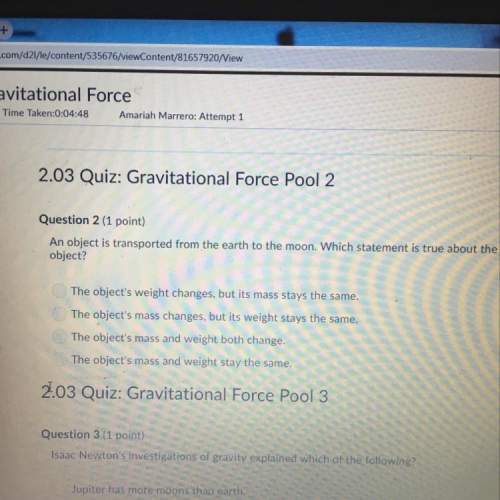
Chemistry, 23.04.2020 16:54 derekmartinez
Gasoline is a remarkably interesting soup of hydrocarbons of various sorts, with bits of this and that added, but the average chemistry is not too far from being carbon and hydrogen, with two hydrogen atoms for each carbon. Burning involves combining gasoline with oxygen to make water and carbon dioxide. (Other things that are made in small quantities, such as carbon monoxide, are not as nice.) The chemical formula for burning gasoline can then be written something like: CH2+1.5 O2 --> CO2+H2O (If you don’t like having one-and-a-half oxygen molecules, you can think of two hydrocarbons plus three oxygens making two carbon dioxides and two waters; it is the same thing, really.) In burning, each carbon atom, C, in gasoline eliminates two hydrogens and replaces them with two oxygens each carbon atom weighs 12 atomic mass units each hydrogen weighs 1 each oxygen weighs 16; So, CH2 starts out weighing 14 (12 from carbon and 2 from hydrogen), and CO2 ends up weighing 44 (12 from carbon and 32 from oxygen)—the weight has more than tripled. Rounding that off a little, the total weight of CO2 put out by a typical U. S. driver is three times larger than the weight of gasoline burned. To get the number of pounds of CO2 per year from a typical car, then, multiply your answer from the previous question by 3.

Answers: 3
Another question on Chemistry

Chemistry, 21.06.2019 13:30
Which is the most likely way an automotive engineer would use chemistry
Answers: 1

Chemistry, 21.06.2019 15:30
Which of the following mining methods disrupts the sea floor?
Answers: 1

Chemistry, 21.06.2019 21:00
Agas in a balloon at constant pressure has a volume of 160 ml at -125*c. what is its volume at 29.0*c?
Answers: 1

Chemistry, 22.06.2019 12:30
Nebulae are enormous clouds in outer space. they are made mostly of hydrogen gas, helium gas, and dust. some nebulae glow brightly, while others do not. the stars that people see are huge, bright balls of glowing gas. they are made mostly of hydrogen and helium. which statement correctly describes other ways in which nebulae and stars are different? a. stars can form inside a nebula but a nebula can never be produced by any star. b. a star always has a higher density than a nebula. c. stars can never form inside a nebula but a nebula can be produced by any star. d. a nebula always has a higher density than a star.
Answers: 3
You know the right answer?
Gasoline is a remarkably interesting soup of hydrocarbons of various sorts, with bits of this and th...
Questions

History, 13.03.2020 09:25



Mathematics, 13.03.2020 09:27

Social Studies, 13.03.2020 09:27

History, 13.03.2020 09:27

Mathematics, 13.03.2020 09:28






Mathematics, 13.03.2020 09:30


English, 13.03.2020 09:30


Mathematics, 13.03.2020 09:32

English, 13.03.2020 09:32


Mathematics, 13.03.2020 09:36




